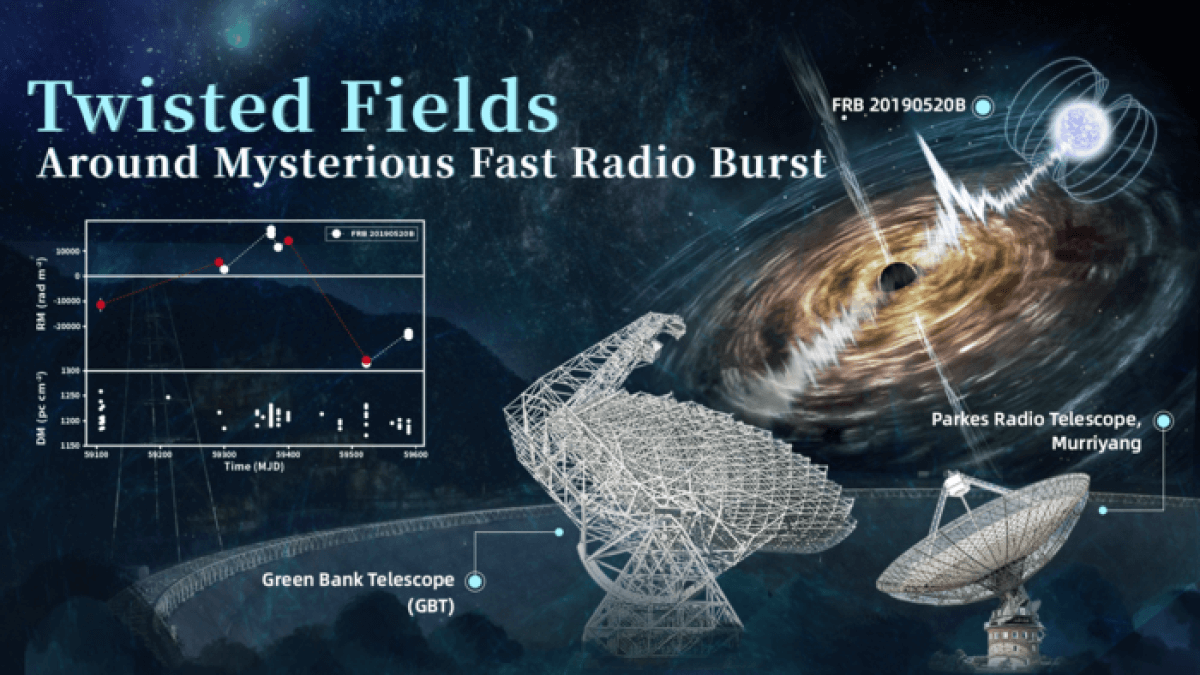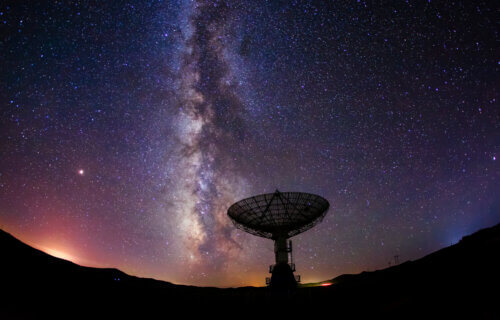PENRITH, Australia — Mysterious radio signals, known as fast radio bursts (FRBs), have reached Earth from a galaxy far, far away. These peculiar beams last for only a millisecond, yet each pulse carries as much energy as our Sun emits in a century, according to scientists. These signals originate from the edge of a dwarf galaxy situated three billion light years from Earth.
Some suggest that these flashes could be messages from alien civilizations possessing technology far more advanced than ours. There are also theories positing that the bursts arise from incredibly dense matter, such as black holes or neutron stars, colliding and subsequently exploding. Another theory proposes that FRBs are a result of distant stars collapsing. Their mysterious origin presents significant challenges for both astronomy and physics.
The fast radio burst labeled as FRB 20190520B is now providing clues that may help decipher this enigma. It is unique in that it consistently produces signals detectable by at least one, and occasionally multiple, telescopes every time it is observed. This reliability makes it an ideal target for further studies.
An international team conducted a monitoring campaign using the Parkes telescope in Australia and the Green Bank Telescope (GBT) in the United States. Their collective analysis was based on observational efforts spanning three continents.
“A total of 113 bursts from FRB 20190520B were detected by the Parkes telescope, exceeding the sum of all fast radio bursts previously discovered at Parkes. This underscores the significance of FRB 20190520B,” Dr. Dai Shi from Western Sydney University reports in a media release.

Something is ‘twisting’ these signals
Through a combined analysis of data from GBT and Parkes, the researchers discovered twisted magnetic fields around the FRBs. Dr. Feng Yi of Zhejiang Laboratory, China, and Anna Thomas from West Virginia University (WVU) measured the polarization properties of these fields and found that the Faraday rotation measure (RM) dramatically changed its sign twice. During a burst signal’s propagation, the polarization characteristics can be influenced by the surrounding plasma. So, what exactly does this mean?
The Faraday rotation measure (RM) is a quantity that characterizes the amount of rotation of the plane of polarization of a radio wave as it travels through a magnetized plasma. It’s affected by the strength and direction of the magnetic field, as well as the density of the plasma the signal passes through.
When the researchers say the RM changed its sign twice, they’re indicating that the direction of the magnetic field along the path of the radio burst changed significantly on two occasions. This could happen if the radio wave passed through regions with different magnetic field orientations.
“The RM can be approximated by the integral product of the magnetic field and electron density. Variation in RM can be caused by either factor, but a sign change must be due to the reversal of magnetic fields, as the electron density cannot become negative,” explains Dr. Li Di, the corresponding author of the study.
This reversal could be caused by propagation through a turbulent, magnetized screen of plasma.
“The turbulent components of the magnetic field around repeating fast radio bursts may be as messy as a ball of wool,” says study co-author Prof. Yang Yuanpei from Yunnan University.
This chaotic scenario might occur when the signal passes through the halo of a companion, such as a black hole or a massive star with winds. Understanding the dramatic changes in the magnetized environment surrounding the FRB is a crucial step towards deciphering the origin of these extraordinary cosmic explosions.
The study is published in the journal Science.
South West News Service writer Mark Waghorn contributed to this report.
You might also be interested in:
- Distant Earth-sized planet emitting radio signals may possess a key to supporting alien life
- Mysterious ‘heartbeat-like’ radio signals discovered inside a solar flare
- Record-breaking radio signal from distant galaxy becomes the furthest detected by Earth


How helpful or important could a three billion year-old message be?